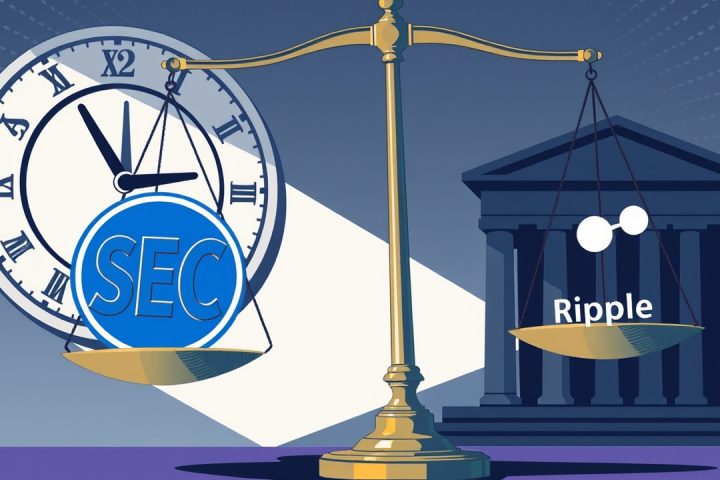Challenges with Bitcoin for Everyday Transactions
Many individuals associate Bitcoin with its decentralized nature and robustness. However, when attempting to utilize Bitcoin for everyday transactions like purchasing coffee, users quickly find themselves facing significant challenges. The time required for transaction confirmations often exceeds the wait for a cup of coffee, and the associated transaction fees can surpass the cost of the drink itself. Bitcoin’s assets have largely remained stagnant, leading to a predominant culture of Holding On for Dear Life (HODL). This means they are not utilized for lending, aggregating, or interacting with other systems.
Bitcoin’s Script Limitations and Transaction Capacity
Bitcoin’s script language, Bitcoin Script, is quite conservative, severely restricting off-chain interactions. It was never intended to handle a vast number of transactions per second, despite increasing public demand for its usability—ranging from purchasing game assets to offering tips for videos without the long wait times.
The Lightning Network as a Solution
To illustrate the difference in transaction capabilities, one can compare the Bitcoin main chain to a highway and the Lightning Network to an express toll road adjacent to it. The Lightning Network conceptually addresses the main chain’s efficiency issues by enabling a payment channel between users, facilitating transactions without feeling the need to document each movement on-chain immediately. Transactions are only recorded on the blockchain once the payment channel is closed, similar to friends settling costs after several meals rather than after each one.
Challenges to Implementing the Lightning Network
Despite the advantages it offers, implementing the Lightning Network poses challenges. First, users must pre-fund channels to initiate transactions, which means establishing a channel for each interaction in advance. Second, routing issues arise when direct channels do not exist between trading parties, leading to transaction failures even if an indirect path is theoretically viable.
Additionally, security risks have surfaced, as users must stay connected to avoid fraudulent transactions by their counterparty during channel closures. This requirement for constant connectivity poses a challenge for regular users, hindering the widespread adoption of the Lightning Network. As a result, the total funds locked in the Lightning Network reportedly hover around $100 million, a drop in the ocean compared to Bitcoin’s trillion-dollar market capitalization, highlighting the need for innovative off-chain payment solutions.
Introducing Bitcoin Thunderbolt
In a recent development, HSBC announced that Bitcoin Thunderbolt represents a significant technological evolution in Bitcoin’s functionality over the past decade. Described as a 2.0 iteration of the Lightning Network, Thunderbolt fundamentally reimagines Bitcoin’s off-chain interactions. Unlike previous enhancements that relied on secondary networks or cross-chain bridges, Thunderbolt proposes upgrades directly at the Bitcoin protocol level, improving scalability, transaction efficiency, and programmability.
Performance Enhancements with Nubit
From a performance viewpoint, Nubit’s advancements optimally enhance Bitcoin’s transaction model through UTXO (unspent transaction output) Bundling technology. This method aggregates multiple UTXOs for transaction processing, significantly speeding up throughput—aiming to enhance transaction speeds by up to tenfold without compromising security. In terms of programmability, Thunderbolt revitalizes and expands the OP_CAT opcode. Initially present in earlier Bitcoin versions but later removed, this opcode facilitates data linking which allows for the development of sophisticated script logic, enabling the execution of smart contracts directly on the Bitcoin main chain.
Decentralized Applications and Trustless Transactions
This upgrade empowers developers to create decentralized applications (dApps) natively on Bitcoin, eliminating their dependency on sidechains or cross-chain solutions. Moreover, Nubit has introduced Goldinals, a unified asset issuance standard grounded in zero-knowledge proofs and state commitments, paving the way for Bitcoin-native tokens while ensuring transaction verifiability without the need for external trust entities or bridges.
The introduction of BitMM facilitates trustless transaction matching and information verification natively on the Bitcoin network. Unlike previously proposed scaling solutions, such as sidechains or wrapped tokens, Nubit champions a main chain expansion strategy, emphasizing that the system operates using native BTC assets.
Looking Ahead: The Future of Thunderbolt
As the core mechanisms of Thunderbolt unfold, they reveal similarities to current solutions while presenting significant improvements, especially in security and theoretical completeness—positioning Thunderbolt as a leading candidate for future BTC financial innovations. However, it remains in its alpha phase, indicating room for growth and engineering refinements. Observers speculate Thunderbolt may evolve in three directions: integration with rollup solutions for enhanced DeFi functionality; the emergence of its distinct ecosystem operating parallel to the main chain; or potential obsolescence due to simpler solutions that fulfill similar roles.
Ultimately, Thunderbolt’s most crucial aspect may not be its execution of payments but rather its pioneering step towards enabling off-chain contract composability for Bitcoin assets. This shift could usher in a new era akin to Ethereum’s DeFi rise, laying the groundwork for a cohesive ecosystem engaging various Bitcoin protocols and assets. While Thunderbolt heralds impressive features like UTXO Bundling and OP_CAT, it is still conceptual, requiring time and development before it realizes its full potential for developers.




